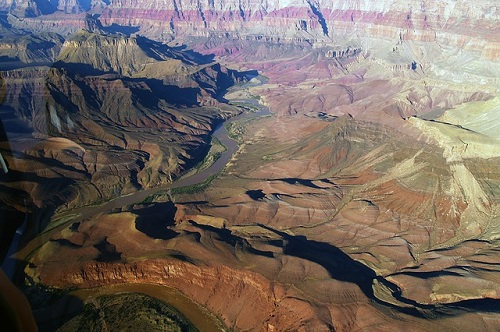A road trip from Yellowstone to Grand Canyon takes you between two of the most famous and popular national parks in the United States.
A 700 mile (1130 km) road trip from Yellowstone to Grand Canyon takes you through Wyoming, Idaho, Utah, and Arizona. You’ll pass stunning national forests, monuments, and parks, plus iconic cities and unique towns, on this amazing natural expedition.
Read on to discover the best way to explore both of these natural beauty spots in a single trip.

A Road Trip From Yellowstone To Grand Canyon: How Far Is It, How Long Will It Take, & What Is The Best Route?
A road trip from Yellowstone to Grand Canyon covers 700 miles (1,130 kilometres) and takes 11 to 12 hours, depending on which route you take. The best route for a road trip from Yellowstone to Grand Canyon is closer to 12 hours and begins by seeing you head south on U.S. Route 191.
You’ll follow it to Hoback Junction, where you’ll go straight across the roundabout and continue heading south on U.S. Route 89. When you reach Brigham City in Utah, don’t turn left when the road does. Instead, continue forward a short way on 1100 Street, then join I-15, again going south.
Remain on this for 265 miles (430 km), to Exit 95, where you’ll join Utah State Route 20 where it begins and follow it for its entire 20.5 mile (33 km) duration. You’ll then turn right to re-join U.S. Route 89 and continue heading south.
After 78 miles (125 km) you’ll reach the town of Kanab. Here you will join U.S. Route 89A and follow it the remaining 68 miles (109 kilometres), to your destination of Grand Canyon National Park.
Best Time For A Road Trip From Yellowstone To Grand Canyon
The best time for a road trip from Yellowstone to Grand Canyon is from the start of July to the middle of August. For starters, it is the warmest, driest stretch in both of the parks. Then, there is the fact that it avoids the height of wildfire season, which traditionally takes place in late August.
When you combine both of these factors, it makes our suggested window of early July to mid-August the best option to ensure your trip is enjoyable from start to finish, with all of the attractions open and no natural disasters ruining the experience.
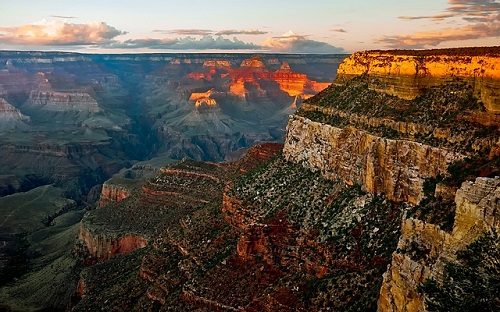
Best Place To Stop On A Road Trip From Yellowstone To Grand Canyon – Salt Lake City, Utah
While it is possible to complete a road trip from Yellowstone to Grand Canyon in a single day, most people will want to break the journey up, in order to make it more enjoyable.
For those trying to pick where to spend a night on their journey, the best place to stop on a road trip from Yellowstone to Grand Canyon is Salt Lake City, Utah.
The capital and most populous city in the state, as well as 22nd most populous in the country, it sits right on the shore of the Great Salt Lake.
Combine this with the lakes and mountains that surround the city, as well as the countless parks within it, and Salt Lake City is a fabulous destination for outdoor recreation and activities like hiking or swimming, as well as winter sports during the colder periods of the year, such as skiing.
Outside of its naturally beautiful location, Salt Lake City is best known for its history with an offshoot of Christianity known as The Church Of Jesus Christ Of Latter-Day Saints.
Settled by the Mormon Pioneers who follow the religion in the 1840s, the city is filled with historic and religious locations relating to this unique and highly secretive group of people. Then you also have the fabulous range of art galleries and museums the city is home to as well.
Throw in its collection of performance venues and events like concerts, exhibitions, festivals, plays, and rodeos, and there is something on offer for everyone in Salt Lake City. That’s without even mentioning that the city is the home of the largest LGBT community in Utah.
With countless bars, shops, and various other outlets, while also being the home of the Utah Pride parade, Salt Lake City is a truly fabulous place to stop for anyone seeking a diverse location.
Best Hotel To Stay At In Salt Lake City – Grand America Hotel
The Grand America Hotel is a stunning, 5-star hotel, situated in the heart of Downtown Salt Lake City. Its elegantly styled architecture is completed with beautiful features like a fountain, while the interiors all feature an equally ornate design.
The quality and décor extends into the rooms, with each boasting things like a marble bathroom and private balcony offering amazing views. They also include luxuries like plush bathrobes and slippers, iPod docking stations, Wi-Fi, and access to room service 24 hours a day.
In the communal areas, you also have the Garden Café serving gourmet American cuisine, a lounge bar where you can drink and relax, business and fitness centres, a full-service spa, and a choice of indoor and outdoor swimming pools.

Top Attractions On A Road Trip From Yellowstone To Grand Canyon
While a road trip can be a great deal of fun, it is only as good as the things you have to see and do along the way. With that in mind, we now turn our attention to the top attractions on a road trip from Yellowstone to Grand Canyon, to help you plan a dream travel itinerary for your trip.
Bridger – Teton National Forest
At 3.4 million acres, Bridger – Teton National Forest is the 4th largest national forest in the lower 48 states and 6th largest in the nation overall. Stretching between Yellowstone and Grand Teton national parks, it covers parts of the Salt River, Teton, Wind River, and Wyoming ranges.
Sitting along the continental divide, its landscape includes the Bridger, Gros Ventre, and Teton wildernesses, which cover 1.2 million acres, 40 named mountains, such as the tallest mountain in Wyoming, the 13,804 foot (4,207 metre) Gannett Peak, and one of Earth’s largest visible landslides.
With 27 glaciers, 1,500 lakes, 3 major rivers, various streams, 2,000 miles (3,200 km) of hiking trails, and wildlife including 75 species of mammals, 355 species of birds, and various amphibians, fish, and lizards, Bridger – Teton is extremely popular for camping, hiking, boating, and backpacking.
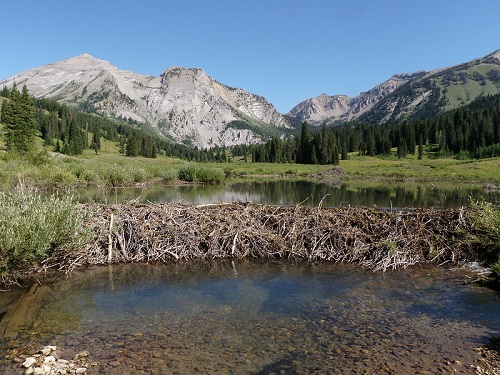
Grand Teton National Park
The 7th most visited national park in the U.S., Grand Teton National Park lies in southwest Wyoming. Centred around the Teton Mountain Range, one of the nation’s youngest and most scenic, it’s named after the tallest mountain in the range, Grand Teton, which stands 13,775 feet (4,200 metres) tall.
Between the mountains, there are forests, historic structures, lakes, rivers, and valleys spread out as far as the eye can see. These all house a wide array of wildlife, including bears, bison, deer, elk, pronghorn, moose, and more than 300 different species of fish and birds.
An incredibly popular location for activities such as biking, boating, climbing, fishing, hiking, and mountaineering, plus a range of winter sports, around 75% of Yellowstone visitors visit Grand Teton National Park, too, and it is highly recommended you do so as well.
Read our Grand Teton National Park guide here.
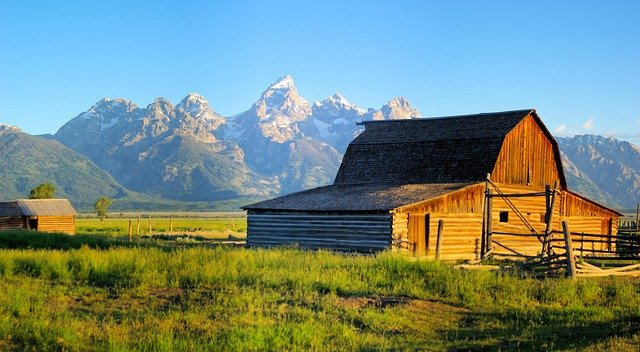
Jackson, Wyoming
Jackson is just the 10th most populous town in Wyoming yet remains among the most popular with tourists. A historic town, Jackson is synonymous with western culture and has been used to shoot various western TV shows and movies, including John Wayne’s starring debut “The Big Trail” in 1930.
Jackson centres around Jackson Town Square, a beautiful city park that boasts the town’s iconic elk antler arches. Around the square, numerous western themed attractions, shops, and restaurants, like the Stagecoach Ride and Million Dollar Cowboy Bar, help to transport you back to the old west.
On the outskirts of Jackson, you also have the National Elk Herd. The largest elk herd in the U.S. with around 7,500 elk, you can see the animals or, depending on when you visit, attend Elkfest or enjoy a sleigh ride. There’s also the National Museum Of Wildlife Art with its great sculptures and paintings.
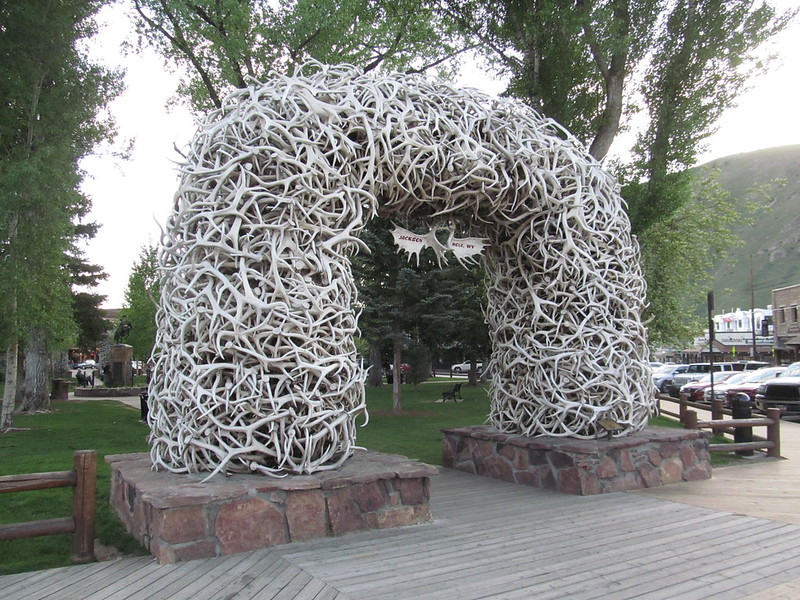
Garden City, Utah
A small town on Utah’s north border with Idaho, Garden City doesn’t get much fanfare but is loved by those in the know for its rural atmosphere and aesthetic. Wood carvings of animals such as bears fill the town, with things like benches and bus stops turned into stunning sculptures.
Garden City is also famous for its raspberries, which the locals sell fresh and use to make jams, pies, and various other delicacies. The town’s main claim to fame though is Bear Lake, which is split evenly between the states of Idaho and Utah.
One of Utah’s largest lakes, it has garnered the nickname the “Caribbean Of The Rockies”, thanks to its stunningly clear turquoise waters. Popular year round but especially so in summer, it is used for activities including boating, fishing, ice fishing, jet skiing, sailing, swimming, and water skiing.
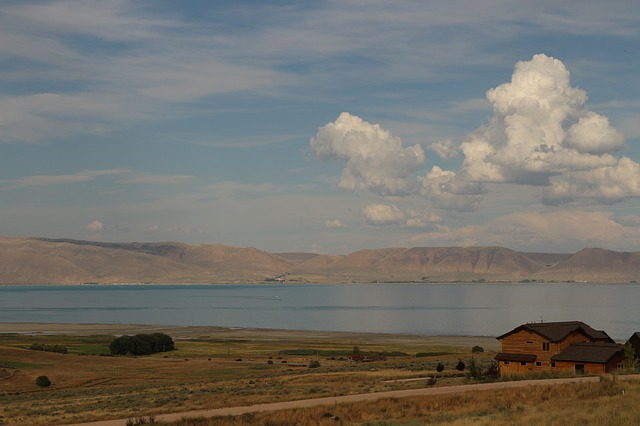
Bryce Canyon National Park
With over 2.1 million visitors each year, Bryce Canyon National Park is the 15th most visited park in the U.S.
Its founding in February 1928 also makes it the 17th oldest. However, at just 35,835 acres, Bryce Canyon is the 10th smallest park in the lower 48 states and 12th smallest in the whole country.
One of Utah's "Mighty 5" national parks, the area is known for its collection of red hoodoos and a natural geological amphitheatre that has been eroded over millennia. Having been inhabited by Native American tribes for centuries, Bryce Canyon National Park is now home to a diverse range of wildlife.
This includes badgers, bears, bobcats, deer, elk, foxes, prairie dogs, porcupine, pronghorn, 15 varieties of amphibians and lizards, and almost 200 species of birds.
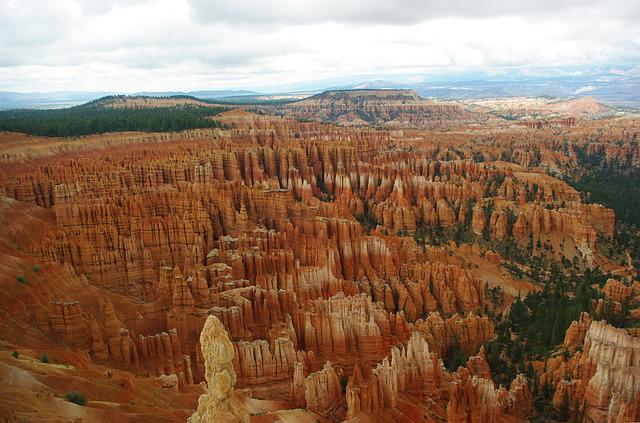
Dixie National Forest
Dixie National Forest covers nearly 2 million acres in southern Utah, making it the largest national forest in the state. It is best known for the steep canyons and gorges carved by the Colorado River, which boast beautiful, multicoloured cliffs.
One of the most expansive high elevation plateaus in the country, it features hundreds of different lakes. Meanwhile, its incredible range of altitudes means it includes forests of everything from desert plants to aspens, firs, junipers, pines, and spruces.
With a range of mountains and wilderness areas, it is a fabulous place to go hiking and experience the diverse weather and landscape that this region of the United States has to offer.

Zion National Park
Zion National Park is the second most visited national park in the nation, behind only Great Smoky Mountains National Park, with an average of 5 million annual visitors. Its founding in November 1919 makes it the 15th oldest park in the nation, while its 147,242-acre size makes it the 28th smallest.
Centred around Zion Canyon, the park sits where the Colorado Plateau, Great Basin, and Mojave Desert meet. It is brimming with different landscapes, including canyons, coniferous forests, mesas, multicoloured deserts, overlooks, riparian woodlands, rivers, and rock towers.
Attractions like Angels Landing and Weeping Rock are among the most popular.
Meanwhile, nature lovers will enjoy a collection that includes badgers, bighorn sheep, bobcats, cougars, coyotes, deer, rabbits, foxes, rats, ring tailed cats, squirrels, various lizards, and nearly 300 different bird species.
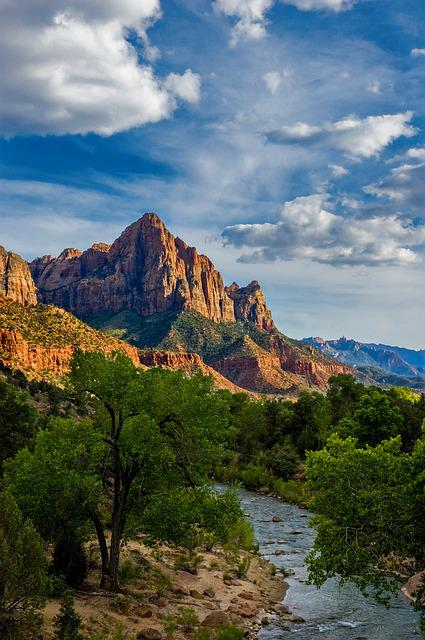
Kaibab Indian Reservation
The Kaibab Indian Reservation is the traditional home of the Kaibab Band Paiute Indians.
As with any Indian reservations, it features a high Native American population and is a great place to learn more about their culture, with plenty of places to talk to the people or purchase handmade goods.
Within the southwest portion of the reservation, you’ll also find the Pipe Spring National Monument.
A historically significant water source for Native Americans and Pioneers, a garden, museum, orchard, visitor center, and the historic Winsor Castle will help you to step back in time, learn about the region, and see and understand how it has evolved over hundreds of years.
The Kaibab Indian Reservation is even a part of the Thunder Mountain Pootseev Dark-Sky Preserve. This makes it an equally ideal spot to sit of an evening to appreciate and learn about the world outside of our own as well.
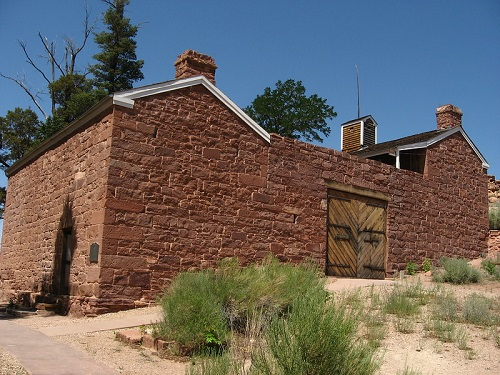
Vermillion Cliffs National Monument
Vermillion Cliffs National Monument is a 293,689 acre preserve that protects four rock formations, including the Coyote Buttes, Paria Canyon, Paria Plateau, and Vermillion Cliffs.
Inhabited by humans for 12,000 years, the monument was created in the year 2000 to stop them from deteriorating.
With dramatic, sheer cliff faces up to 3,000 feet (910 metres) tall and a range of wildlife that includes over 20 species of raptors, various hawks, mammals like desert bighorns, pronghorns, and mountain lions, and even rare types of fish, it is a great place to stop and take in some truly unique scenery.
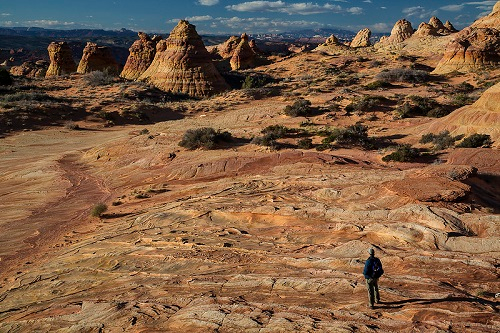
Conclusion
A road trip from Yellowstone to Grand Canyon is one of the best ways to experience some of the best natural hotspots the United States has to offer. This guide will hopefully have helped you to plan out the perfect route and travel itinerary for you to see it all in style.
From when to go and how long the trip will take to what to see and where to stay along the way, you should now be completely set. That means all you have left to do is start getting everything booked, so you can look forward to experiencing it all for yourself as soon as possible. Our guide to exploring the Grand Canyon can even help you there as well.
Anyone interested in continuing the drive may also be interested in our guide to a road trip to San Francisco from Grand Canyon National Park.

